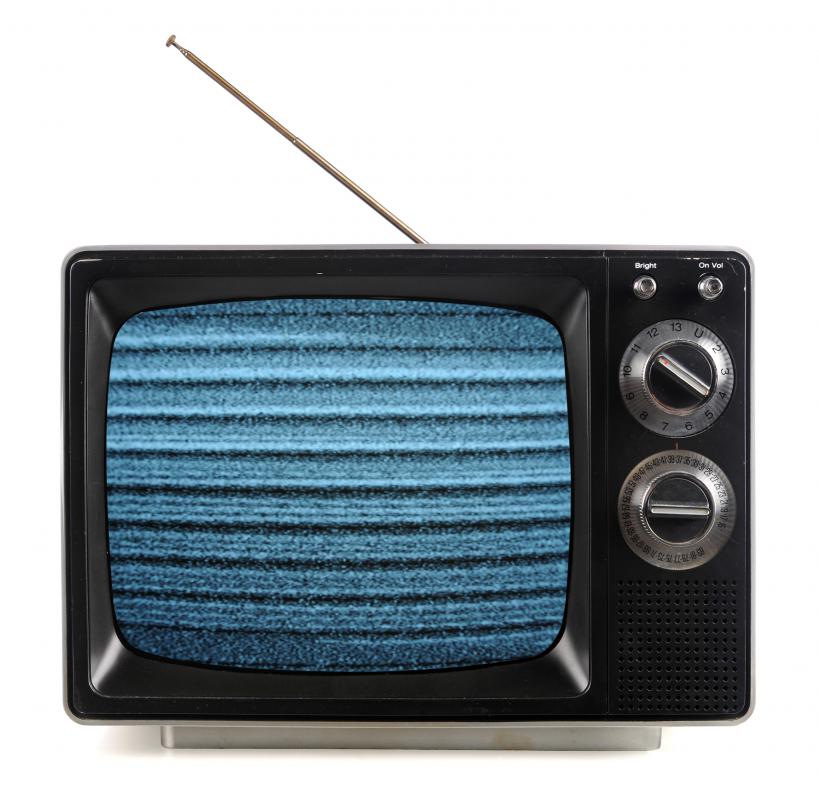At WiseGEEK, we're committed to delivering accurate, trustworthy information. Our expert-authored content is rigorously fact-checked and sourced from credible authorities. Discover how we uphold the highest standards in providing you with reliable knowledge.
What Is a Digital TV Switchover?
The phrase “digital TV switchover” describes the process of switching from analog television signals to digital ones. Most of the time, a digital TV switchover happens on a national level and is instigated by a government. Digital television is available in most areas of the world, and consumers can often elect to make the switch voluntarily. Consumers who do not or cannot make the switch by that time may find themselves unable to receive broadcast television services.
Early television broadcasts, the first of which aired in the 1950s, were made exclusively with analog signals. Analog signals work a lot like radio signals, and in fact utilize radio frequencies. Information and data packets are transmitted across a certain frequency from a sender — usually a broadcast station — to a receiver, which in most cases is a television set outfitted with an antenna. Analog signals are to thank for the free distribution of public access and local television channels.

Most cable and subscription-based channels were also originally broadcast over analog frequencies. As technology advanced, however, so did the strength and fidelity of broadcast spectra. Cable networks were among the first to begin moving away from the analog space by transmitting and receiving with digital television signals, often known simply as DTV.

Digital signals do not occupy the radio frequency space the way analog signals do. Rather, they exist in an entirely different spectrum. The digital bandwidth is quite a bit broader than the analog frequencies, which allows for better picture and sound quality, as well as multimedia streaming applications like digital video recording, interactive Internet compatibility, and real-time uploads sent directly to televisions or digital cable receivers. Many smartphones and Internet-enabled mobile phones are also capable of receiving digital TV signals.
Television quality and enhanced application benefits are not the only reason why a digital TV switchover is advantageous, however. There is growing demand for digital television services all over the world, but running both digital and analog services simultaneously consumes an enormous amount of spectrum space. As the wireless phone and Internet industry expands, that space is increasingly in demand. Many national governments feel that eliminating analog television entirely — that is, forcing a digital TV switchover or digital TV transition on a national basis — would free up space for more innovation in other burgeoning technologies.
Digital television, like its analog predecessors, will continue to be freely broadcast. This means that consumers will still be able to receive free transmissions of local stations. Depending on the age and manufacturing specifications of individual televisions, however, some viewers may need to make certain upgrades to get their sets switchover-ready.
Televisions produced in the 2000s or later are usually capable of automatically receiving digital signals. Older machines built in a strictly analog world often need digital TV converter boxes in order to continue receiving data. These boxes contain a digital TV tuner that can convert the digital signal into a format that the television’s analog receptors can recognize. Most governments offer incentives and price breaks to residents needing to purchase these boxes in order to make the digital TV switchover smoother and more approachable to a wider swath of the public.
AS FEATURED ON:
AS FEATURED ON:












Discuss this Article
Post your comments